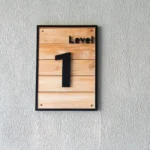The balance beam event in gymnastics demands precision, elegance, strength, and confidence. Understanding how scoring works can provide valuable insights for athletes, coaches, and fans alike. Here’s a comprehensive guide to balance beam scoring and what judges specifically look for:
Difficulty Score (D-Score)
The difficulty score in balance beam gymnastics reflects the complexity and variety of the elements a gymnast performs. Judges evaluate several aspects to determine this score:
Element Values
Each skill in gymnastics, whether it’s a leap, jump, turn, acrobatic move, or dance step, is assigned a difficulty value. This value is typically represented by letters, starting from A (easiest) to J (most difficult). Each letter corresponds to a specific point value that contributes to the overall difficulty score.
To calculate the difficulty score, judges count the point values of the gymnast’s highest-rated skills performed during the routine. For women’s gymnastics, the top eight most difficult skills are usually counted.
Composition Requirements (CR)
To ensure well-rounded routines, gymnasts must incorporate specific elements, known as Composition Requirements. Each fulfilled requirement adds 0.5 points to the D-Score, totaling a maximum of 2.0 points. For the balance beam, these requirements include:
- At least two acrobatic flight elements performed consecutively.
- At least one leap or jump with a 180-degree split.
- At least one full turn (minimum 360 degrees) on one foot.
- Acrobatic elements executed in multiple directions (forward, backward, sideways).
- A dismount of prescribed difficulty level.
Failing to meet each requirement results in a deduction of 0.5 points per missing element.
Connection Value (CV)
Gymnasts earn bonus points by seamlessly linking difficult elements without noticeable pauses or balance checks. Typical CV bonuses range from 0.1 to 0.2 points per connection, encouraging routines characterized by fluidity, continuity, and difficulty.
Execution Score (E-Score)
While the D-score focuses on the difficulty of the routine, the E-score evaluates how well the gymnast performs the routine. The E-score starts at 10.0 and is deducted based on errors. Here’s what the E-panel judges look for:
Technical Errors
The E-judges make deductions for mistakes in form, technique, and alignment. These include:
- Bent knees or elbows during elements
- Flexed feet instead of pointed toes
- Misalignment in body position (e.g., excessive arching or hollowing)
- Insufficient height or amplitude on jumps and acrobatic skills
Small errors can result in deductions of 0.1 or 0.3 points. Falls or severe errors, like missing a skill altogether, incur large deductions (usually 1.0 point). If multiple large errors occur in a routine, the E-score can drop significantly.
Balance Checks and Wobbles
Balance is paramount on the beam, and the E-judges carefully watch for any wobbles or loss of stability. If a gymnast needs to adjust her position or steps to regain balance, deductions are applied. More severe mistakes, such as touching the beam with the hands to avoid a fall or falling off the beam entirely, incur significant deductions (usually 1.0 point for a fall).
Artistry and Presentation
Artistry involves the gymnast’s expressiveness, choreography, rhythm, and overall flow of the routine. Judges reward routines that:
- Smooth transitions between elements
- Creative and expressive choreography
- Engaging rhythm and flow
- Confidence, gracefulness, and dynamic performance
Deductions are made for disjointed routines, lack of artistry, or poor presentation, usually ranging from 0.1 to 0.3 points.
Neutral Deductions
Neutral deductions are separate from difficulty or execution scores and reflect procedural errors. Common examples include:
- Time Violations: Balance beam routines typically must not exceed 1 minute 30 seconds. Exceeding this duration results in a 0.1-point deduction.
- Coach Interference or Spotting: A coach touching or assisting a gymnast incurs deductions ranging from 0.5 to 1.0 points.
- Other Violations: Dress code breaches, unsportsmanlike behavior, or improper use of supplementary mats also incur deductions (usually 0.1 to 0.3 points).
These deductions are applied directly to the combined (D + E) score.
Calculating the Final Score
The gymnast’s final balance beam score is calculated as:
Final Score = D-Score (Difficulty) + E-Score (Execution) – Neutral Deductions
Example:
- D-Score: 6.5
- E-Score: 9.2
- Neutral Deductions: 0.1 (time violation)
Final Score: 6.5 + 9.2 – 0.1 = 15.6
Key Changes in the 2025–2028 Code of Points
The Code of Points, which guides how gymnasts are scored, is updated regularly to keep up with the sport’s evolution. For the 2025-2028 cycle, several important changes have been made, especially for balance beam routines. Here are the main changes gymnasts need to know:
1. More Value for Complex Combinations
- In the new Code of Points, gymnasts are encouraged to link more challenging skills together in combinations. For example, combining jumps, leaps, and acro skills in quick succession will give gymnasts higher difficulty points. This change rewards routines that show both technical skill and smooth transitions.
2. Stricter Form and Execution Standards
- There’s now a stronger focus on perfect form, especially for elements like straight legs, pointed toes, and body alignment. Small errors, like bent knees or arms, will result in more deductions. This change aims to encourage gymnasts to perform their routines with both precision and elegance.
3. Neutral Deductions Are More Clear
- The rules about neutral deductions (which apply to all gymnasts) have been clarified. These deductions are given for things like poor body position during skills (such as mounts or dismounts). This makes it easier for judges to apply consistent standards when scoring.
4. Encouragement for Creativity
- Gymnasts are now encouraged to be more creative in their routines. Including original or new elements, like unique transitions or choreography, can earn extra points. This change is meant to make routines more exciting and challenging.
5. More Focus on Control in Turns
- Turns on the balance beam, like the wolf turn, are now judged more strictly. Gymnasts must show greater control during the turn to avoid deductions for instability. This means gymnasts need to focus on holding their balance and executing smooth, stable turns.
6. Clearer Dismount Rules
- Dismounts are now more strictly evaluated. Gymnasts performing difficult dismounts must stick the landing with both feet on the beam. Any movement after landing, like hopping or stepping, will result in more deductions.
7. Difficulty Rating Changes for Some Skills
- Some skills have seen changes in their difficulty ratings. For example, complex pirouettes or acro elements that were once rated as higher-level skills may now be scored as lower-level skills, depending on how they’re performed. Gymnasts will need to adjust their routines to maintain high-difficulty scores.
The 2025-2028 Code of Points brings new rules that place more emphasis on skill combinations, perfect form, creativity, and control. While they present new challenges, they also create opportunities for gymnasts to innovate and showcase their unique talents on the balance beam.













